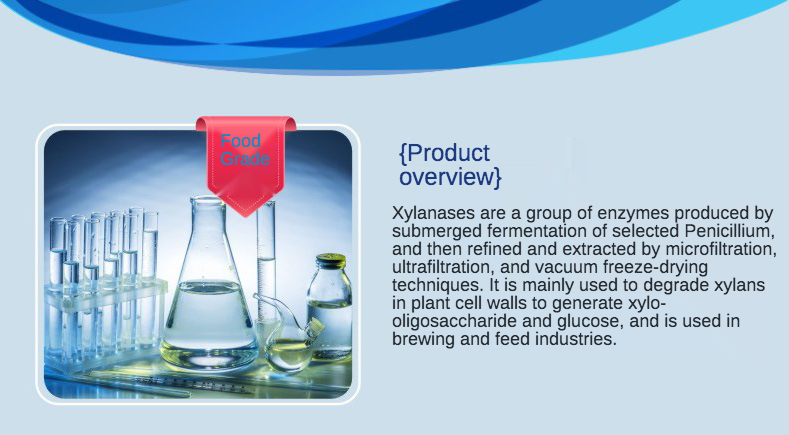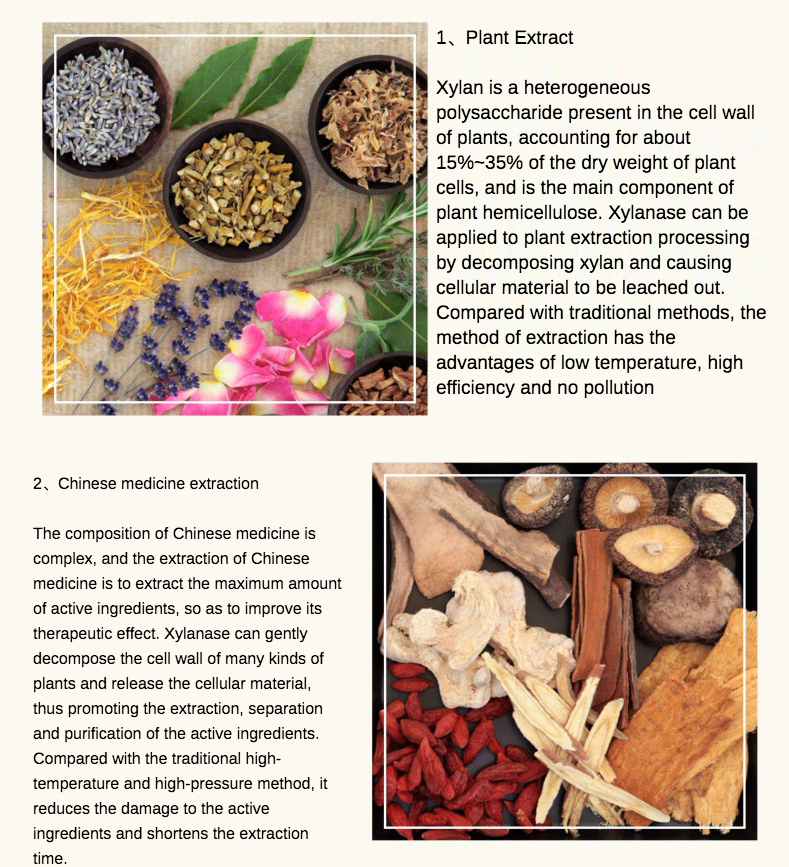






Xylanase
Xylanase is a group of enzymes extracted by deep fermentation culture of selected Penicillium, followed by microfiltration, ultrafiltration, and vacuum freeze-drying technology. It is mainly used to degrade xylan in plant cell walls to produce xylo-oligosaccharide and glucose, which are used in the brewing and feed industries.
Xylanase Enzymes
Xylanases include β-1,4-endo-xylanase, β-xylosidase, α-arabinosidase, and more. They can degrade xylan-like hemicellulose found abundantly in nature. These enzymes hydrolyze xylans into oligosaccharides such as small oligosaccharides and xylodisaccharides by breaking down the β-1,4-glycosidic bonds of xylan molecules. β-xylosidase catalyzes the release of xylose residues by hydrolyzing the ends of oligosaccharides, ultimately converting xylans into monosaccharides.
Product Details
It is soluble in water, and the aqueous solution is a beige liquid.
Product name: Xylanase
Main components: xylanase, glucose
Product specification: 2-250,000 U/g (can be customized)
Product properties: light yellow powder
Storage: room temperature, dry, and protected from light
Shelf life: 12 months
Applications of Xylanase
- Plant Extract: Xylan is a heterogeneous polysaccharide present in the cell wall of plants, accounting for about 15%-35% of the dry weight of plant cells. Xylanase can be applied to plant extraction and processing by decomposing xylan and making the intracellular material leach out. Compared with traditional methods, xylanase extraction has the advantages of low temperature, high efficiency, and no pollution.
- Chinese Medicine Extraction: The composition of Chinese medicine is complex, and the extraction of Chinese medicine aims to extract the maximum amount of active ingredients to improve the therapeutic effect. Xylanase can gently decompose the cell wall of many kinds of plants and release cellular material, thus promoting the extraction, separation, and purification of active ingredients. Compared with the traditional high-temperature and high-pressure method, it reduces the destruction of active ingredients and shortens the extraction time.
- Baking Industry: Xylanase can hydrolyze the polysaccharide bond of flour. After using xylanase to treat flour, it can increase the content of small and medium molecules of sugar in dough, increase yeast gas production, and then improve the nutrition and quality of bread. It solves the problems of small size, light color, and easy aging of bread.
- Feed Industry: Common livestock feeds such as cereals, beans, wheat, and processing by-products contain a large amount of hemicellulose. Xylanase can break down the non-starch polysaccharides (NSPS) of feed into oligosaccharides with a small polymerization degree, thus improving feed performance. Adding xylanase to feeds can effectively improve the nutritional value of feeds and play a role in promoting livestock weight gain.








